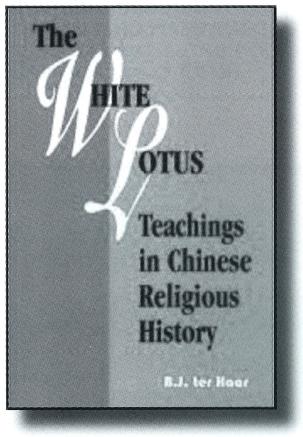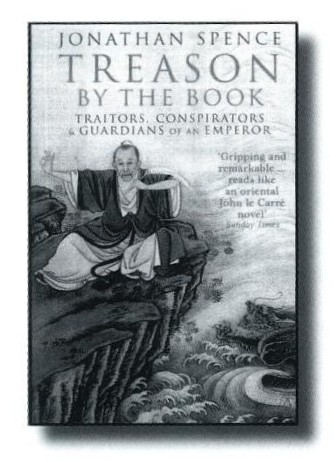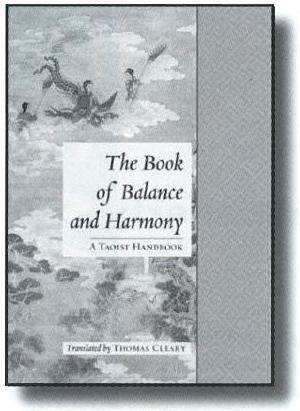Car54 - Climate Change
My latest audio blog podcast including Taoism, ecology, martial arts and lifestyle.
It is with great sadness that we have to report that Dan Docherty passed away on 9th December 2021. His memory lives on through this website, his articles, videos, podcasts and in the hearts, minds and teaching of his many students and friends throughout the world.
If you are looking for a teacher in this style, then please visit “Where to Learn” “Instructor Listings” page as although this is not being kept up to date it will provide contact details for a number of his main students.
The PTCCI practitioners Facebook page is useful should you have questions.
You're A Cult! Part 1
YOU’RE A CULT!
BY DAN DOCHERTY
You’re a Cult – A Review of Chinese Sects, Heterodox Millenarian & Syncretic and Chinese Internal Arts by Dan Docherty
Editor Ron asked me for some book reviews or an article. I hope I have managed to kill those two birds with this one stone. I thought it would be interesting to look at Chinese attitudes to sects and cults, especially in view of the Falun Gong situation.
I planned this review some years ago, but only now have felt ready for the task. This is not a comprehensive review, but an eclectic one, in part looking at some of the less familiar writings on the subject. Some of these are virtually unreadable, being written in the jargon of the academic freemasonry, yet I hope and trust you will find this to be fascinating background.
In China, as in other feudal societies, martial arts, therapeutic holistic exercise and meditation had and still have strong links with religion, ritual and revolution (think Knights Templar - and the 3 kisses, and other Crusaders, Janissaries, Sufis (champ dancers or damn chancers?), Thugees, Lamas, Shaolin monks, Complete Reality School Taoists…
Now cults and sects are not quite the same thing. Though ''cult'' started off life as a way of referring to religious practice or beliefs and ritual connected with worshipping a deity/ deities, it has come in our godless age to acquire the meaning of religious practice of a minority that is unorthodox and/or spurious. ''Sect'' tends to mean a dissenting religious body, often considered heretical within a certain religious tradition or whose adherents recognize a special set of teachings.
Many well-known Tai Chi Chuan and internal arts masters have been or are sect/cult members. Wu Jian-quan, Chen Pan-ling, Wang Shu-chin et al.

B.J. ter Haars book, ''The White Lotus Teachings in Chinese Religious History'' (University of Hawaii Press ISBN 0-8248-2218-8) is pretty comprehensive in discussing a recurrent sobriquet which dates back to at least the early Tang (7th century AD). The White Lotus sect dedicated to worship of the Buddha Amitabha was founded around 1133 by Mao Zi-yuan. Initial converts were poor vegetarian peasants who refused to pay taxes or carry out compulsory labour.
Later it became more of a cult and home to a mixed bag of Messiah-awaiting and apocalypse-predicting Holy Willies, heterodox Buddhists, bored literati (many of whom, became lay Buddhists or Taoists), itinerant preachers and the usual posse of cranks and troublemakers – as we shall see, these epithets pretty well sum up successive Chinese regimes’ attitude to cults. Nevertheless, a common reason for oppression of heterodox groups by hierarchies is that much of what is said and done by such groups is true and correct.
In 1557 a rebellion, allegedly caused by White Lotus apocalypse predictions, took place in Huzhou led by low ranking military officers and martial arts instructors. These would be prime candidates to lead any such revolt and they continue to be closely monitored.
Western equivalents would be Rob Roy MacGregor and his clan of black-mailers with their ''taxes'' on the English and supporters of the religious and political status quo in Scotland or Frank and Jesse James robbing the money-grabbing mortgage-foreclosing railroads and banks with their band of Missouri desperados. On another level people got together as self-help groups to finance local needs such as education, sanitation etc.
The first famous Tai Chi Chuan master was Yang Lu-chan, who went to Beijing in 1852 to teach at the Imperial Court. In his home town of Guangping in Hebei the local record of 1550 referred to an uprising of 1420 as being White Lotus. Thereafter White Lotus groups were described as being sources of local unrest and were equated with other heterodox sects such as the Yellow Turbans of the late Han dynasty as being troublemakers.
Officials variously referred to the White Lotus as ''gathering at night, dispersing at dawn'', ''man and women mixing in an irregular way'' (sometimes it was added ''…to burn incense'' – another common practice in ''Bai Shi'' initiation in traditions such as mine) ''eating vegetables serving demons'' and were accused of magic practices such as making paper figures into living beings. These were not words of approval. Between 1429 and 1584 some White Lotus groups in an attempt to distinguish themselves from earlier rebellious White Lotus, changed their names by removing the term ''White'' so there was ''Golden Lotus Teachings'' or the ''Lotus Tradition''.
We have seen this change of name also in many Chinese martial arts lineages.
However, in the case of many cults the name changed but not the group ethic. They had their own names for adherents such as Daoren (Person of the Way), Daoyou (Friend of the Way), Daogu (Lady of the Way)… I guess readers may find difficulty with these names for Buddhist, but these people were heterodox not orthodox. They discussed the Three Taoist Internal Alchemy Treasures of Qi, Jing and Shen using Buddhist terminology, while the lotus was itself an important Taoist symbol (''Sweep Lotus Leg'' of Tai Chi Chuan). This Internal Alchemy connection meant the White Lotus practitioners could also be accused of improper sexual activities.
The Wu Wei Teachings (this character Jiao is also used to describe orthodox religions) appeared in the late Ming, but without any millenarian element, interestingly this was around the putative heyday of Tai Chi Chuan patriarch, Chang San-feng. In 1637, an official gazetteer from the Lower Yangzi alleged that the White Lotus Teaching practitioners considered the Wu Wei Teachings to be their predecessors. To some extent then the White Lotus were syncretic as their practices and beliefs had both Buddhist and Taoist elements.
Scriptures written before 1500 are rare except for the Dunhuang collections and government attacks. Indeed the founder of the Ming dynasty, Zhu Yuan-zhang, introduced many restrictions on religious worship. Shamanism and healing, whether religious or magical, were prohibited as was the White Lotus Society.
One of the common activities of White Lotus groups was the recitation of spells sutras and names. In Tai Chi Chuan the Classics are mnemonic and were chanted during practice, while in a number of traditions including the one to which I belong, mantras are used.
A common objection of the Confucian hierarchy was that correct behaviour should not be done to acquire merit and offset bad karma, but because such behaviour is correct. I have some sympathy with this view and believe that Tai Chi Chuan and Nei/ Qi Gong practice should be done because it is good in itself rather than just to address health problems or meet girls.
Certainly in the Ching dynasty during the late 18th and early 19th centuries, the idea of mankind consisting of exiled heavenly spirits going through painful cycles of reincarnation while awaiting a Messiah had become common. On numerous occasions such belief was used to foment and justify rebellion just as it justified official persecution which included torture to acquire confessions which were in turn used to justify further persecution. This use of torture has been a part of Chinese jurisprudence from time immemorial down to the present era. It included beatings, making prisoners kneel on iron chains, starvation and many more methods. Indeed it was considered that a confession was necessary to justify conviction.
An irony often missed is that the Chinese Communist party has often justified its actions before during and after the Revolution with reference to justified rebellions against corrupt feudalism from the ''Old Hundred Names'' (common people) including White Lotus groups.
The book by ter Haar is pretty tough going and maybe only for the committed historian of Chinese society, but it puts the Falun Gong movement into perspective with its exhaustive study of the White Lotus phenomenon.

''Treason by The Book – Traitors Conspirators & Guardians of an Emperor'' by the excellent Jonathan D. Spence (Penguin History; ISBN0-141-02779-7; £8.99) is a terrifying story of the detailed investigation under his own guidance of a ludicrous 1728 plot against the Manchurian Yongzheng Emperor by an oddball bunch of fake scholars, geomancers, the mysterious Taoist, chain-gang imperial eunuchs, beggars and snake-oil salesmen. It was almost a cult, but just didn’t get off the ground. Here’s what happened.
Someone hears rumours that loyal Chinese General Yue Zhongqi can be persuaded to lead his troops in rebellion. A front man is found to make the trek from the boondocks to Xian to hand a letter of support to General Yue.
The General is terrified and contacts the Emperor by Imperial Messenger. An enquiry begins; torture, dissembling and double agents are used. Local scholars and itinerant preachers are implicated. Rumours are traced, so it is known they were spread from someone coming from Beijing. A convict gang had passed through; the chain gang included eunuch servants of the Emperor’s rival brothers. The eunuchs had talked of the evil of the Emperor to the locals, the rumours spread in a series of Chinese whispers. People believed; sometimes that’s all it takes.
Martial artists and experts in breath control techniques as well as Taoists with ''special powers'' are involved in the failed conspiracy. Scholars are executed for writing mildly seditious poetry; families and associates are sentenced to a life of enslavement or exile and their property confiscated for the action and inaction of kinfolk; high officials are dismissed for being dilatory in their investigations. The law is so complicated none can follow it and all are terrified by it and its relentless enforcers.
In the end maybe the good guys won as the Emperor’s published rebuttal of the charges against him helped people remember them while his successor’s order to destroy all copies of the rebuttal made people think the allegations against Yongzheng were true.
Mr. Spence has written a brilliant and accessible book. It is also easy to read.

About 15 years ago, my old friend, Francis Gury, gave me the Book of Balance and Harmony (North Point Press - published by Rider in UK; ISBN0 7126 3521 1) translated & with an introduction by Thomas Cleary. I was put off reading it as it contains no index, bibliography or Chinese characters, though it purports to be an academic work. I read it cover to cover in Moscow recently and deeply regret my earlier hesitation, though I still don’t like the translator’s approach. Worst of all his is not a clear translation; as is the wont of many Western translators vague words like ''energy'' are used to describe wha is obviously a more specific Chinese term.
The author of this 13th century work was Li Daoqun, a student of sixteen or more masters, who, according to Mr. Cleary is supposed to have learned the final secret from ''a mysterious personage'' in Central Asia. Though there has been a veritable plethora of such personages floating around at various times – and not just in Central Asia, the material at times is immensely interesting to Tai Chi Chuan practitioners. Furthermore, Li later became a master of the Complete Reality school of Taoism to which Tai Chi Chuan patriarch Chang San-feng has been linked. He also wrote commentaries on the Tai Chi Diagram of neo –Confucian Zhou Dun-yi (1017-73).
It seems clear that the book was not entirely Li’s original creation. It is divided into 20 sections covering alchemy, Taoistic practices – including meditative, breathing and sex; philosophy, poems, commentaries and criticisms. Buddhism is often mentioned especially of the Chan variety; there is a well established connection between these schools. In 1984 I saw Taoist imagery including the Tai Chi symbol amongst the ruins of the Shaolin Temple and Buddhist imagery including gods and swastikas on Wudang Mountain. Over the centuries they influenced one another in both practice and theory.
In Part vii, the ''Gold Testing Stone'', we have ''… Sages, using their power of skilful means (note the use of a Buddhist concept), have opened up good avenues of introduction, setting up terminology and imagery, writing alchemical treatises to guide students.'' If these writings etc. are followed people will ''transcend into the realm of reality.'' And, ''…people of later times …have clung to the superficialities … bringing in all sorts of irrelevant issues, resulting in fragmentation of the Way.'' Then the author refers to ''…ignorant shallow students of today who arbitrarily write misinterpretations of the meaning of the classics of the sages…'' The parallels with Tai Chi Chuan practitioners and the TCC Classics are clear.
In Part viii, the ''Nine Grades of Practice'', for the ''Lowest of the Low'' level, which mentions 72 schools of sexual play, we have, ''… some have a virgin boy and girl copulate…'' which parallels a passage in one of 40 essays passed by the Yang family to the Wu which purports to have come from Chang San-feng and deals with internal alchemy. The passage talks about ''matching the jade girl and the baby boy…''
The ''Upper Middle Grade'' covers transmission of initiation and precepts, readings and recitation and thus has parallels with Bai Shi initiation ritual.
The ''Lower Upper Grade'' mentions ''…meditative breathing, massage, physical exercises… keeping the attention on the navel and swallowing copious amounts of saliva; all part of regular Tai Chi Chuan and Qigong practice. The passage continues, ''nine massage strokes for one forceful exhalation…''; this has parallels with, ''Move the Qi as through a pearl with nine crooked paths.'' which appears in the Tai Chi Classic ''An Interpretation of The Practice of The Thirteen Tactics''.
The ''Middle Upper Grade'' mentions, circulatory methods, bending and stretching and twisting the spine – all Tai Chi methods of practice. The ''Higher Upper Grade'' is mainly concerned with internal Alchemy.
Part xiii, Questions on Alchemy has the question, ''Strum the lute to call the phoenix…, what does this mean?'' It is explained as a metaphor for emptying the mind and nourishing the spirit. This would seem to explain the frequent appearance of Stroking the Lute/ Seven Stars (essentially the same technique) in Yang lineage long forms as a major application is to come to an on guard to face a new attack or opponent thus necessitating ''emptying the mind''.
Part xiv has a number of interesting thoughts on spiritual alchemy, including, ''When the mind is settled the spirit is complete; when the spirit is complete one perfects essence.'' This is reminiscent of the Dalai Lama’s statement that without peace of mind meditation is worthless and explains the ritualistic preparatory movements in many Tai Chi schools prior to entering the practice of form or Nei Kung.
Part xvii contains a long passage on movement and stillness of crucial relevance to both Tai Chi Chuan and Qigong practitioners.
Part xviii ''Songs'' contains references to the Northern Dipper and by extension is also a metaphor for the ''Seven Stars'' which we talk about in Tai Chi Chuan. A ''mystic pearl'' and later ''a tiny pearl''are also talked about which may or may not be the one with nine crooked paths referred to in the Tai Chi Chuan Classics. There are also many references to Qigong techniques to be found in Immortal Family Baduanjin and to the Nei Kung technique ''Embracing the One''. There are great quotes, ''Beginners who do not seek teachers grow old without attainment, bringing misery upon themselves.'' And ''Beginners are subject to deception; great mystics are not liked.''
Part xix, ''Poems'' refers again to the ''mind pearl'' and ''tiny pearl'', but is largely concerned with the problem of fixation. The poem ''Forging the Sword'' gives some substance to the name ''Qian Kun Jian'' (Heaven and Earth Sword).
Part xx, ''Veiled Words'', again deals with delusion and fixation and removing ''habit conditioned energy'' which is a prime purpose of internal training. Lastly it talks about knowing how and where to stop.'' I’m almost ready to do so – for now.
As the reader will see there are some very attractive elements in the Complete Reality approach to life and enlightenment which made it attractive to the literati, but the concepts are not suited to the peasant in the field so it did not pose the same degree of threat as White Lotus or Falun Gong. I hope those who deny Tai Chi Chuan’s Taoist roots now realize that they are right, what they practice truly has nothing to do with Taoism. For the others, get the book, despite certain misgivings the material is so fascinating that it is a must buy.
Part 2 of this review will look at other cults and sects referring to more of the growing body of literature on the subject.